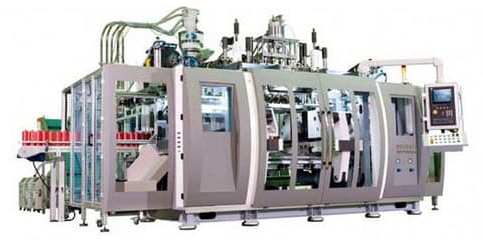How to Clean the Head of Extrusion Blow Molding Machinery
Using extrusion blow molding machines, molten resin extrudes into a parison, which has a cylindrical shape. While hanging in a downward position, two halves of a mold close firmly around it. At both the top and bottom portion of the mold, the cylindrical shape pinches tight while leaving a hollow tube in the center.
The machine then forces pressurized air through a needle inserted in this tube, causing the walls to expand and stretch to the point of conforming to the mold. Once the resin cools and becomes solid, the mold opens, making it possible to remove the finished product. If necessary, the manufacturer can add colorants mixed in with the resin, as well as adhesive or barrier layers.

As a respected and trusted extrusion blow molding manufacturer, you have confidence in providing your customers with precision products. Although there are slight differences in design, depending on the type of extrusion blow molding machines used, they typically include the following:
- Material hopper
- Extruder
- Hydraulic cylinder (for wall thickness)
- Accumulator head (also called the parison head)
- Blow pin (for stretching)
- Closing clamp
- Blow Mold
- Mold platen and clamping unit
For seamless operation, it is imperative you keep all the different parts clean. In particular, you want to focus on the head of an extrusion blow molding machinery.
With the cleanup complete, you can start up the extrusion blow molding machinery by following the manufacturer’s protocol. Keep in mind that during this process, you want to eliminate as much of the contamination as possible. If you struggle, you can always install a new screen pack and make necessary adjustments to the clearance of the head.
Visit to source for more appropriate information.
Contact Details:
PET ALL MANUFACTURING INC.
85 Royal Crest Court, Units 1 & 2 Markham,
Ontario, L3R 9X5
Phone: (905) 305-1797
Email: cmerrick@petallmfg.com
